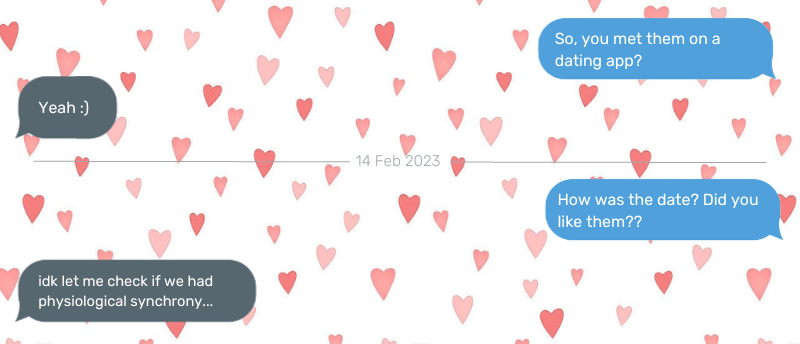Have you met AI? The wingman that identifies physiological synchrony underlying social interactions

Artificial intelligence can tell what type of conversation two people are having based on physiological data, offering insight into the scientific basis of interpersonal relationships.
Researchers at the University of Cincinnati (OH, USA) have trained a computer to recognize patterns in physiological data indicative of certain types of conversations. The new study highlighted the phenomenon known as physiological synchrony, the synchronizing of people’s heart rates, respiration and other autonomic nervous system responses when they have a conversation or collaborate on a task. Previous studies have found that physiological synchrony can suggest if people will work well together. Although in its early stages, this kind of technology could one day inform our relationships.
The study involved 16 pairs of participants, and each participant discussed suitable topics for the study before its commencement. They then participated in four conversations with another participant: a positive conversation where they shared the same opinion, a negative conversation where they disagree and two agreeable, more neutral conversations, during which they each had a turn to control the conversation.
 Rewriting oxytocin’s love story using CRISPR
Rewriting oxytocin’s love story using CRISPR
The neurohormone traditionally labeled the ‘love hormone’ may have just lost that title following a study on attachment behaviors in prairie voles.
During these conversations, the team collected five pieces of physiological data: peripheral skin temperature, skin conductance, electrocardiogram, chest respiration and nose respiration. By applying pattern recognition algorithms to this large amount of data, the team was then able to train an AI model to match certain physiological characteristics with the type of conversation the participants were having at the time.
The computer was able to successfully determine the nature of the participants’ conversation 75% of the time, from their physiological output alone. By measuring the extent of physiological synchrony between two people and assigning the conversation type, the AI model has the potential to reveal more about our relationships. This information could benefit educators, therapists and people with autism to better understand how student engagement, trust building and empathy can be enhanced.
In the future, the research team hopes to refine this technology, increasing its accuracy and shedding light on the physiological basis of interpersonal relationships, cooperation and competition. First author Iman Chatterjee commented, “a modified version of our system could measure the level of interest a person is taking in the conversation, how compatible the two of you are and how engaged the other person is in the conversation.”